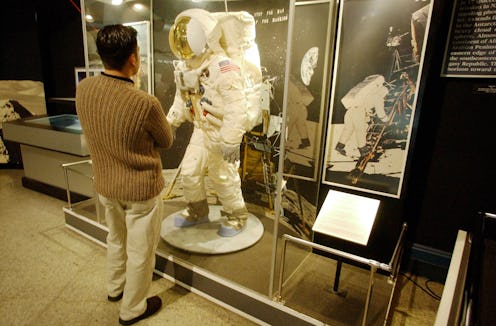News
Remembering The First American Woman In Space
"To boldly go where no man has gone before." That's how space travel is described in the brief monologue that preceded nearly every episode of Star Trek I watched as a kid. I was 9 years old when Janeway became the show's first central female captain, and space still seemed a man's domain. Back on Earth, however, one woman had worked hard to shatter the cosmos' highest glass ceiling for American women. Thirty-three years ago today, with the launch of the space shuttle Challenger, Sally Ride became the first American woman in space.
The early days of space exploration — Russian Soviet cosmonaut Yuri Gagarin was the first human to blast into space on April 12, 1961 — were undoubtedly a boy's club. Space largely remained uncharted territory for women for more than two decades. Although the Soviet Union would send a woman to space two years after Gagarin, it would take another 19 years before a second woman would follow. As the third woman in space, Ride's historic voyage came 20 years and two days after the Soviet Union's Valentina Tereshkova became the first woman in space.
Raised in Los Angeles, Ride didn't always dream of space travel. It was a career in professional tennis that Ride initially yearned for. But when she became concerned she didn't have the athletic talent needed to pursue a career on the courts, Ride turned her attention to another subject she found fascinating: physics. She earned bachelor's and master's degrees from Stanford University before obtaining a Ph.D. from the university in 1978. While in her final year of studies, Ride saw a newspaper advertisement seeking astronaut candidates. The ad reportedly emphasized that, for the first time ever, women were welcome to apply. Ride landed a coveted spot as one of just six women selected for the 1978 National Aeronautics and Space Administration's (NASA) astronaut program.
At the age of 32, roughly five years after beginning her career at NASA, Ride became the first American woman in space when she blasted off aboard the space shuttle Challenger with mission STS-7 on June 18, 1983. Ride served as a mission specialist and helped to deploy two communications satellites and conduct experiments. She described that historic launch as "exhilarating, terrifying and overwhelming all at the same time," according to NASA's history archives.
But Ride was reportedly less impressed with how the media handled the historic nature of her spaceflight. Although she was happy to help break galactic barriers for women, Ride made a point of calling out reporters who tossed inane and sexist questions her way during a press conference shortly before Challenger's 1983 launch. "You notice I'm not answering," People magazine reported Ride quipped in response to inquiries about her desire to be a mother. "How come nobody asks Rick those questions?" Ride asked when reporters peppered her with questions about if she cries on the job or how spaceflight would affect her reproductive organs. "It may be too bad that our society isn't further along and that this is such a big deal," Ride said.
Ride travelled to space for a second time in 1984, and her galactic accomplishment of going where few women had gone before have inspired numerous other women to follow in her footsteps with careers in space travel. Ride passed away from pancreatic cancer at the age of 61 on July 23, 2012. It wasn't known until after her death — as she had never publicly commented on the matter — that Ride had also been the first LGBT astronaut.
